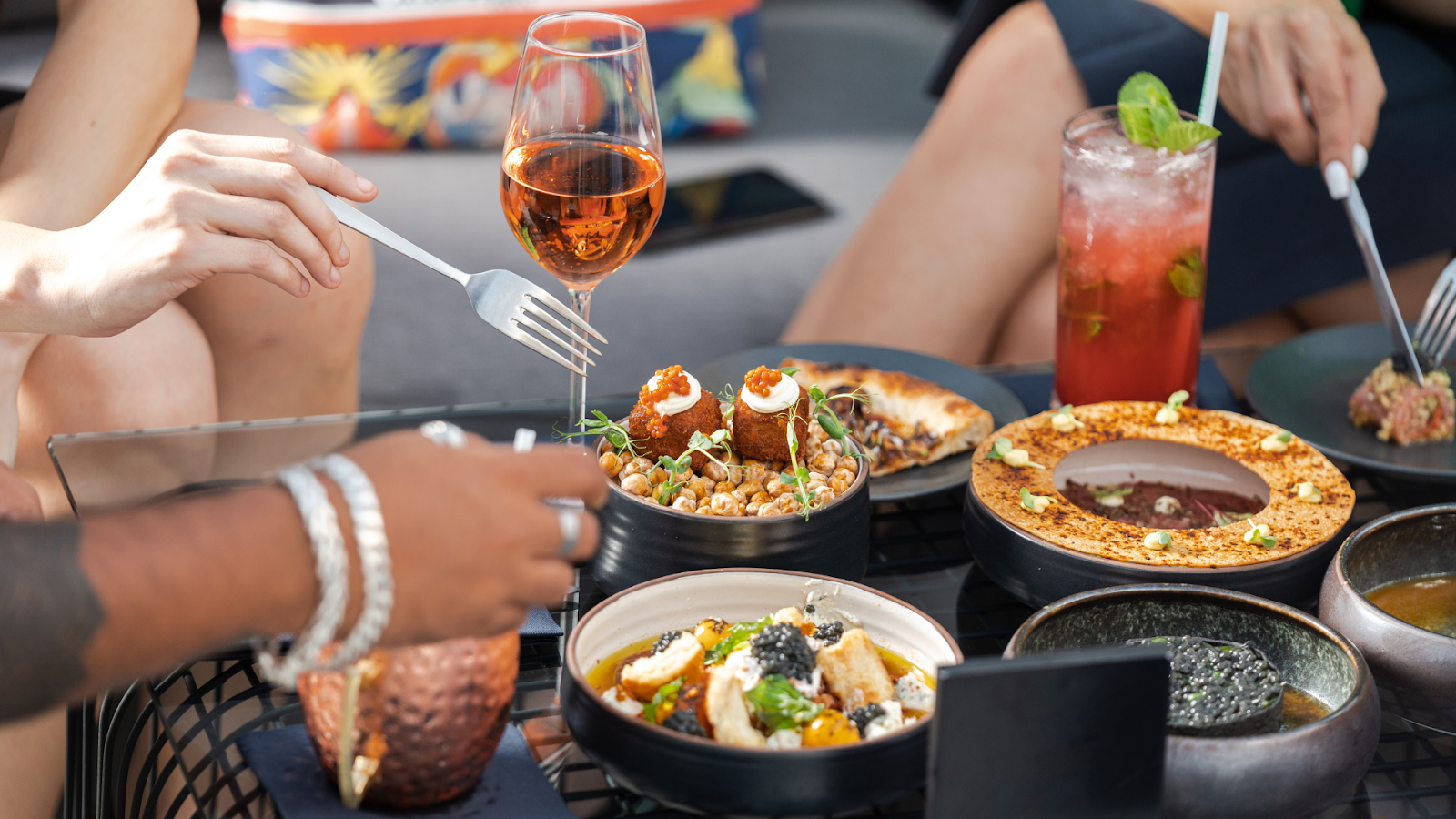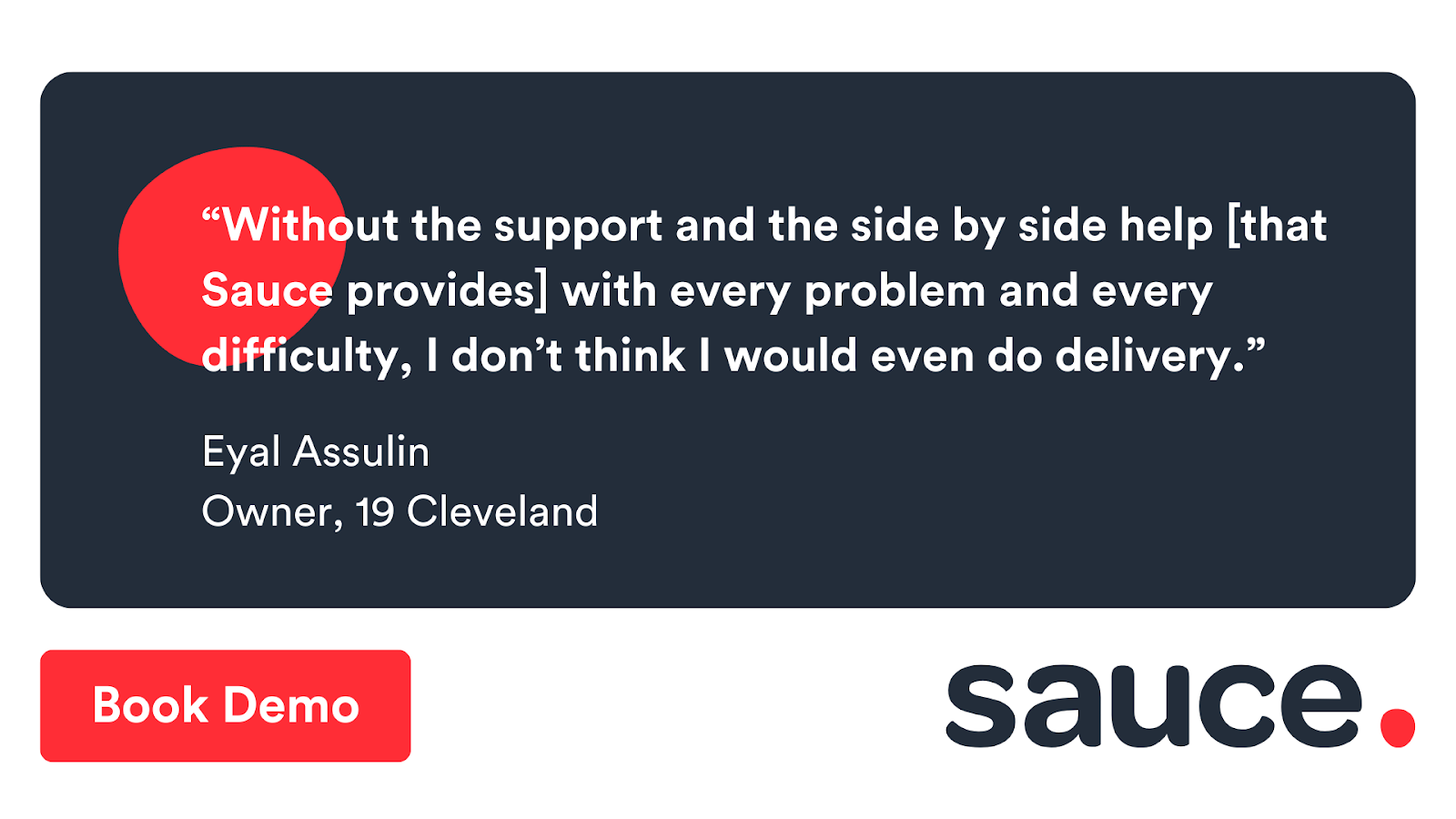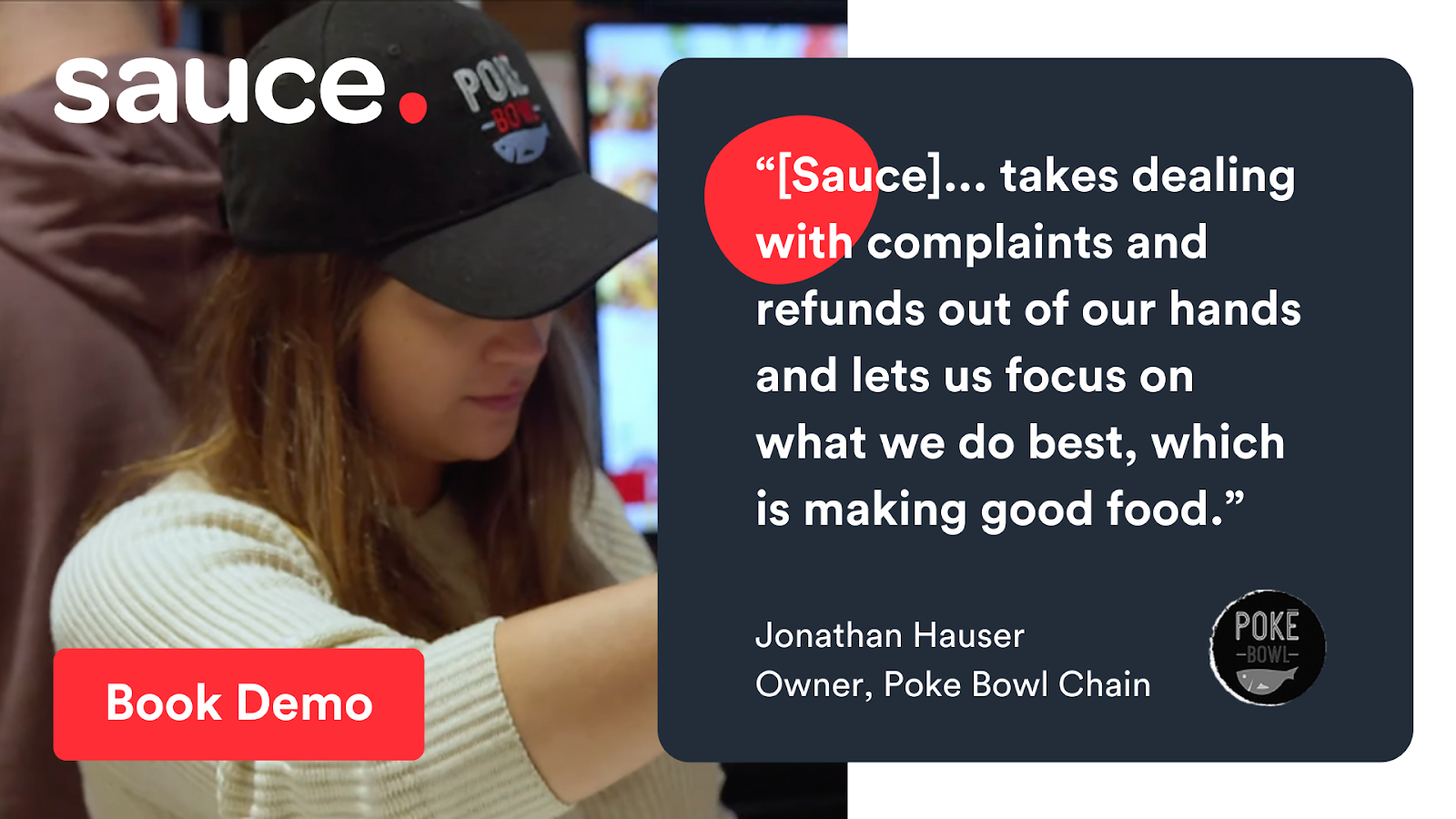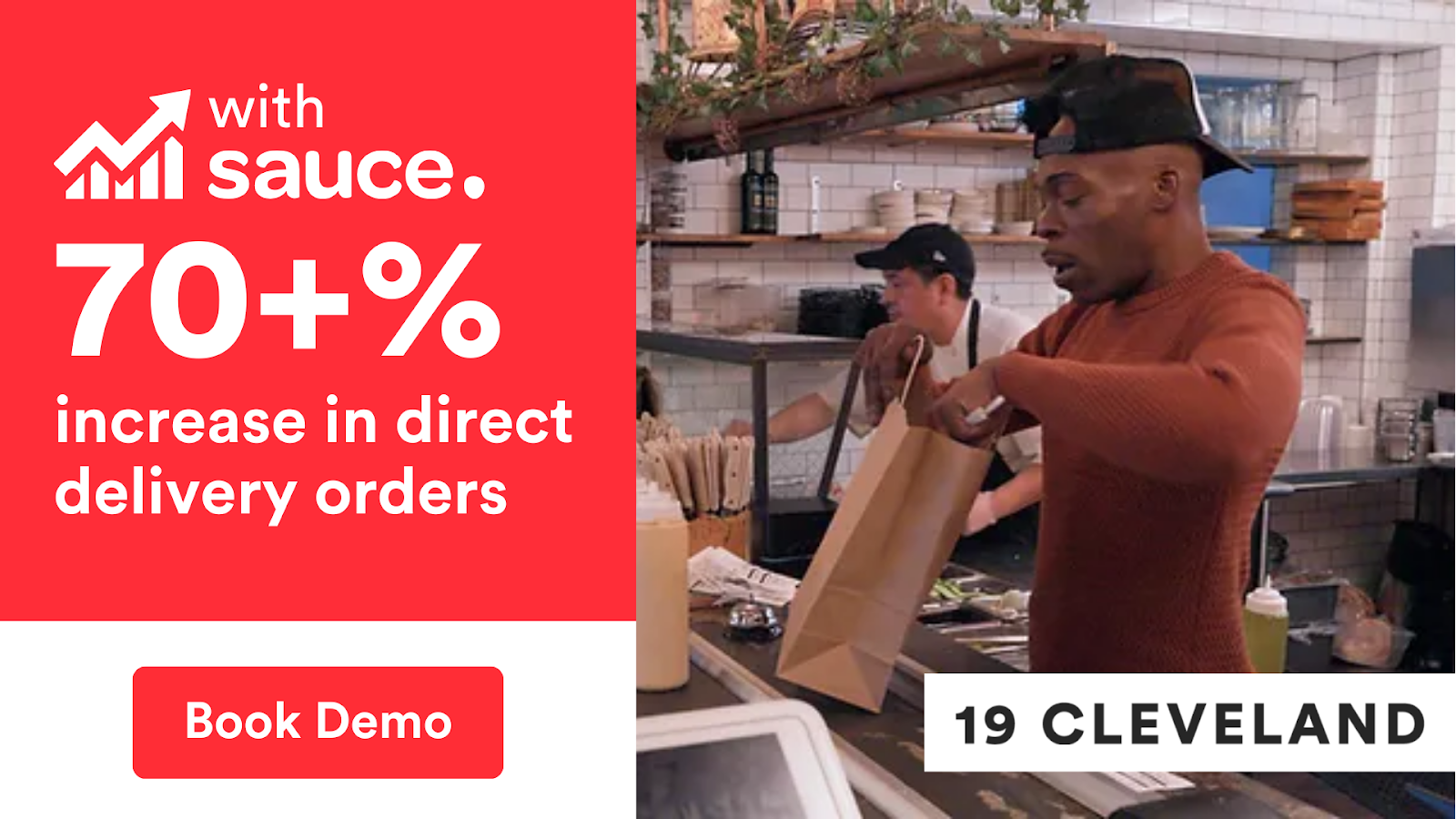
Key Takeaways:
-
Seasonal Specials Drive Engagement: Seasonal dishes connect with the time of year, offering customers fresh and relevant menu options. They keep the menu exciting and encourage repeat visits.
-
Limited-Time Offers Build Excitement: Time-sensitive specials create a sense of urgency, drawing in customers and boosting sales. This strategy is perfect for holiday promotions or weekend events.
-
Loyalty Programs Strengthen Customer Relationships: Rewarding repeat customers with exclusive deals or early access to specials promotes loyalty. These perks keep customers coming back regularly.
There’s always another way.
What makes a restaurant stand out in a sea of endless dining options? Sometimes, it’s not just the food — it’s the experience. Specials are like a restaurant’s secret weapon, a way to surprise and delight customers while showcasing creativity and value. But crafting specials to resonate demands careful execution and the right tools.
At Sauce, we understand the importance of protecting your restaurant’s brand reputation while ensuring customer loyalty. Our online order management system allows restaurants to streamline taking and fulfilling orders while seamlessly handling refunds and delivery issues.
In this piece, we’ll explore actionable ideas for restaurant specials that spark customer interest and drive real results for your business.
1. Seasonal Specials To Match The Time Of Year
Seasonal specials are an excellent way to connect your menu with the changing times of the year. Offering dishes or drinks reflecting flavors, traditions, or celebrations of a specific season lets your restaurant create a fresh customer experience.
For example, during the summer, you could offer dishes like refreshing watermelon salads, tropical cocktails, or grilled barbecue platters. In the fall, pumpkin-inspired desserts, apple cider drinks, or hearty soups can appeal to customers looking for comforting seasonal flavors. Winter brings opportunities to introduce festive holiday-themed specials, like mulled wine, hot chocolate, or roasted dinners with warm spices. Spring might call for lighter options, like dishes featuring asparagus, peas, or citrus fruits.
Aligning your specials with the season helps customers feel connected to the current time of year and makes your menu offerings more enticing.
2. Limited-Time Offers That Create Urgency
Limited-time offers are a proven way to draw attention and drive customer action. The concept of “here today, gone tomorrow” adds excitement and exclusivity to your menu. Customers are likelier to try a special dish if they know it won’t be available for long.
These offers can be tailored to events, holidays, or specific promotions. For instance, you could run a “Weekend-Only” brunch special, “Game Day” snacks, or limited-edition menu items tied to a cultural celebration like Cinco de Mayo or Valentine’s Day. Highlighting these dishes on social media and in-store signage can further build buzz.
The limited availability encourages repeat visits as customers want to try the unique options before they disappear. It also adds variety to your menu without requiring permanent changes.
3. Combo Meals For Increased Customer Value
Combo meals are a smart way to provide customers with convenience and perceived value while encouraging them to explore more of your menu. Bundling multiple items into one offer lets you create a cost-effective option to satisfy cravings and appeal to different customer needs. Here’s how you can make your combo meals stand out:
Lunch Combos For Busy Diners
Lunch combos are a hit for customers seeking quick and filling meals during their busy day. A practical example is offering a sandwich, a small salad, and a reasonably priced drink. This saves customers time while giving them a balanced meal, making it an ideal choice for office workers and students.

Themed Dinner Combos
Themed dinner combos are perfect for evening diners looking for a full-course experience. For instance, a “Taste of Italy” combo could include pasta, garlic bread, and a small tiramisu to round off the meal. Grouping these items together lets you provide a curated experience to keep your customers returning for more.
Family-Style Combos For Shared Dining
Family-style combos cater to larger groups, offering enough food for everyone to enjoy at a shared table. An example could be a platter featuring a mix of appetizers, a selection of mains, and a dessert sampler. This bundle especially appeals to families or friends celebrating special occasions or enjoying a casual get-together.
4. Happy Hour Specials To Attract Evening Crowds
Happy hour specials are an effective way to bring in customers during slower hours, especially in the late afternoon and early evening. Offering discounts on drinks and appetizers, you create an inviting environment for guests to unwind after work or socialize with friends. Here’s how you can craft appealing happy hour deals:
-
Discounted Signature Cocktails: Offering discounts on your signature cocktails is a great way to showcase your bar menu while attracting new customers. For example, you could feature a two-for-one deal or a reduced price on a customer-favorite drink. This not only draws in patrons but also highlights the creativity of your bartending team.
-
Appetizer Deals To Pair With Drinks: Pairing discounted appetizers with drinks adds extra value for customers and encourages them to order more. Options like sliders, nachos, or wings are perfect for sharing and work well alongside alcoholic beverages. This pairing strategy keeps guests lingering longer, increasing the likelihood of additional purchases.
-
Themed Happy Hour Events: Introducing themed happy hours, such as “Margarita Mondays” or “Wine Wednesdays,” can make your specials more memorable. Themes add an extra layer of fun and give regular customers a reason to visit on specific days. These events are also significant for promotions on social media, where they can generate buzz and bring in larger crowds.
5. Local Ingredient-Based Dishes
Featuring dishes made with local ingredients is an excellent way to connect with the community and appeal to diners who value fresh and sustainable food. You create a unique menu that supports nearby farmers and artisans by highlighting seasonal, local produce or locally sourced meats and seafood. Here’s how you can use local ingredients effectively:
Seasonal Produce Specials
Creating dishes highlighting seasonal fruits and vegetables is a simple way to incorporate local ingredients into your menu. For example, in the summer, you can offer a salad with locally grown tomatoes and cucumbers or, in the fall, a soup featuring butternut squash from a nearby farm. This approach keeps your offerings fresh and ties them to the region’s agricultural cycle.
Collaborations With Local Producers
Partnering with local producers can add authenticity to your specials while supporting small businesses. Featuring a dish made with cheese from a local creamery or beer from a nearby brewery creates a story around the menu item. This collaboration draws in those producers’ loyal customers and strengthens your community presence.
Highlighting Local Food Traditions
Incorporating traditional recipes or techniques unique to your area is another way to celebrate local ingredients. For example, a seafood restaurant near the coast could feature a clam chowder made with freshly caught shellfish. This approach gives customers a taste of your region while showcasing the quality and heritage of your menu.
6. Loyalty Program Perks And Exclusive Deals
Loyalty programs are a reliable way to encourage repeat visits while rewarding your most dedicated customers. Offering exclusive deals to members is one way to create a sense of appreciation, giving additional reasons to choose your restaurant over competitors. Well-designed perks not only increase customer retention but also boost overall satisfaction.
One idea is to give members access to special discounts or free items after reaching a certain spending threshold. For instance, offering a complimentary appetizer or dessert after their fifth visit can encourage diners to return regularly. Similarly, running limited-time promotions, like double rewards points on specific days, keeps the program fresh and exciting.
Another way to use loyalty programs is by giving members first access to new menu items or seasonal specials. This creates exclusivity and makes loyal customers feel valued. Promoting these benefits through email, text notifications, or an app helps ensure they stay informed and engaged with your restaurant.
7. Themed Specials For Unique Experiences
Themed specials are a creative way to capture your customers’ attention and give them a memorable dining experience. You can spark excitement and attract regulars and new visitors by tying your menu to a specific theme, event, or cultural celebration. These specials offer an opportunity to showcase your restaurant’s personality and connect with diverse audiences.
One example is hosting specials based on popular cultural events, such as “Oktoberfest,” which features German-inspired dishes like bratwurst, pretzels, and beer. Similarly, you could celebrate international cuisine by offering a “Taste of Mexico” night with tacos, tamales, and margaritas. These themes allow customers to enjoy something different while celebrating global flavors.
You can also create fun, quirky themes tied to pop culture, sports events, or nostalgia. For instance, a 90s-themed menu featuring dishes with playful names or a game-day special offering shareable platters for sports fans creates an exciting reason for people to visit. Themed specials aren’t just about food — they create stories customers want to share, leading to word-of-mouth promotion.
8. Family Deals And Group Discounts
Family deals and group discounts effectively appeal to larger parties, making dining out more affordable and enjoyable. By offering shared platters, kid-friendly meals, or discounts for groups of four or more, you create an inviting option for families and friends to dine together. This approach increases table turnover and encourages guests to return for celebrations or casual gatherings.
For example, you could offer a family-style meal with a choice of appetizers, a main course platter, and dessert for a fixed price. Another idea is to provide discounts for large groups, such as a 10% off deal for parties of six or more. These offers are especially popular during weekends or holidays, making your restaurant a go-to choice for group dining.
Final Thoughts
Crafting effective restaurant specials is both an art and a strategy. It’s about creating moments that resonate with your customers and keep them returning. Specials can transform a dining experience, showcasing your restaurant’s personality, innovation, and commitment to quality. Whether through seasonal offerings, exclusive deals, or creative themes, they provide an opportunity to stand out in a competitive industry.
Read Also:
Frequently Asked Questions About Ideas For Restaurant Specials
What are restaurant specials, and why are they important?
Restaurant specials are temporary menu items or offers designed to attract customers and boost sales. They allow testing new dishes, highlighting unique offerings, or encouraging visits during slow times. Specials can also create excitement and a sense of urgency, making customers feel like they’re getting a one-of-a-kind experience.
How can restaurant specials increase customer loyalty?
Specials can increase loyalty by offering exclusive perks or rewards to repeat customers. For example, creating deals that are only available to loyalty program members shows appreciation and keeps them engaged. Offering personalized or consistent discounts through specials can further strengthen customer relationships.
How often should a restaurant change its specials?
The frequency depends on your customer base and menu strategy, but many restaurants update specials weekly or seasonally. This keeps the menu fresh and exciting while encouraging repeat visits. Consistency is also essential — customers should know when to expect new specials.
Are there any risks in offering restaurant specials?
Risks include overspending on ingredients or creating specials that don’t align with customer preferences. Careful planning and testing can minimize these risks. Tracking sales performance and gathering feedback can help ensure your specials meet your goals.
How can specials be marketed effectively?
Promote specials through social media, email newsletters, and in-house signage. Use eye-catching visuals and engaging captions to generate interest. Highlighting limited availability or unique features of the special helps build excitement.
Should restaurant specials always include discounts?
Not necessarily — specials don’t always have to be discounted. Offering unique dishes or exclusive menu items can work just as effectively without lowering prices. The focus should be on creating value and interest for customers.
Can restaurant specials be tied to local events or holidays?
Yes, aligning specials with local events or holidays is a great way to attract customers. For example, creating a menu for a local food festival or a holiday-themed dish can attract attention. These types of specials help create a connection with the community.
How can specials attract new customers?
Unique and well-advertised specials can intrigue people who haven’t visited your restaurant. Social media campaigns, special deals for first-time customers, or partnering with local businesses for promotions can bring in new diners. Making a strong first impression with these specials can turn new visitors into regulars.
What role does staff training play in promoting specials?
Staff training is critical for effectively promoting specials. Your team should know the offer’s details, including ingredients and pricing, so they can confidently recommend it. Enthusiastic staff can significantly influence a customer’s decision to try the special.
How can customer feedback improve future specials?
Customer feedback helps you understand what works and what doesn’t about your specials. Listening to reviews and gathering insights allows you to refine your approach for future promotions. Adjusting specials based on feedback ensures they remain relevant and appealing.



